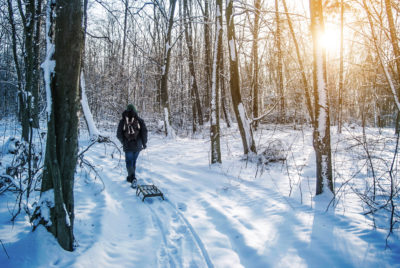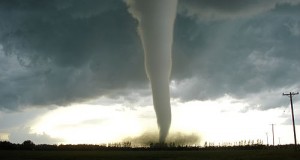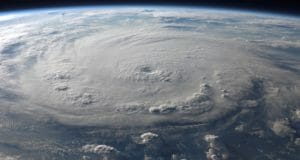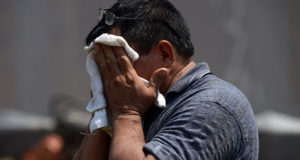|
Listen To The Article
|
Prioritizing Your Remote Supply Cache
Lately, I’ve been thinking more and more about having a remote supply cache. Yep, I’m constantly trying to increase my knowledge of survival. (It never really ends.)
I try to keep up by studying what others are saying, reading books, trying new things and analyzing disasters. It is probably this last area, analyzing disasters, where I learn the most. Each disaster that happens shows us more and more of what we can expect to encounter ourselves, when and if we are faced with a similar situation.
Take the recent fires in California. First off, I have zero risk of a forest fire where I live (we don’t have any forests). Nevertheless, I still took the time to learn everything I could about what happened, especially what transpired in Paradise, California. There an entire town was wiped out by fire, which destroyed the homes, businesses, and property of the inhabitants.
I don’t know if there were any preppers in Paradise, but statistically, it would stand to reason that there were. After all, something like one in every 50 families in the United States has embraced prepping. So, if 1200 homes were destroyed, it’s fairly safe to say that 24 of those homes were occupied by preppers. I wonder how well those families fared.
Spreading Your Supplies Around A Bit
But I have to confess, if I had been one of those families, the only advantages I would have had over anyone else would have been that I would have had a bug out plan prepared. I also would have had gasoline for my cars and my bug out bag packed. I also would have had a prepared list of other things I would have taken with me. That’s it. Everything else that I’ve spent countless hours and dollars doing in order to prepare myself for a potential disaster would have gone up in smoke, just like everyone else’s possessions.
This isn’t the only time that I’ve been faced with such a realization. When Hurricane Harvey was passing through the Gulf of Mexico, there was a time, before it turned north, where it was heading right for my home. Fortunately for my family and I, it veered north, hitting Houston. But as I looked at the flooded homes of those people, I realized something. I realized that any preppers amongst them weren’t any better off than the rest of the people awaiting evacuation by the Cajun Navy.
The Basic Problem With A Remote Supply Cache
Here’s the basic problem as I see it. A lot of us have taken the stand that it is better to bug in than bug out. The reason for this is that most of us don’t have a prepared survival retreat to bug out to. Without that prepared retreat, we are going to leave behind our home, which can at least serve as shelter, in order to find shelter elsewhere. That’s not an ideal situation.
Notwithstanding, putting all our eggs in one basket isn’t a good solution either. This is especially true when you consider that disasters like forest fires, tornadoes, earthquakes and hurricanes can totally destroy our homes. If that should happen, as it did to the people of Paradise, California, then all our preps will be for naught.
I think I am like many other people in this. That is, I want all my preps with me so that if a disaster strikes, I’ll have everything I need to have in order to have the best chance to survive. Anything I have off-site might be inaccessible to me, thereby making it turn into just so much wasted money. That’s something I simply can’t afford.
What’s The Solution?
I’ve come to the conclusion that my original premise was wrong. That is, I can’t afford to keep all my preps in one place. This ultimately means that I may lose access to some of them when a disaster strikes. Yet, We have to balance out our risks here. What if the options are to take a chance on losing everything or take a chance on losing a lot of things? It makes more sense to go with the latter rather than the former, as hard as that may be.
What this boils down to is splitting our preps between two locations: our home and a remote location. Keep in mind, an ideal remote location needs to be far enough away that it won’t be affected by any natural disaster which strikes our homes. At the same time, it would be good if it were somewhat close. This is especially crucial if the location provides us with the potential of recovering those supplies if we need to. I’m not sure that’s possible, but if it is, it would be good.
Remote Supply Cache On A Budget
Most of us can’t afford a cabin or bunker in the woods to use as a survival retreat. Nonetheless, that doesn’t mean that we can’t afford to stockpile some equipment and supplies at a remote location. There are mini storage warehouses all across the county. And it doesn’t cost all that much to rent a space that’s large enough to store a stockpile of food and other supplies.
Ideally, this remote supply cache should be someplace where it would be possible to establish ourselves in a serious survival situation, even in a TEOTWAWKI situation. To me, that means a rural town and preferably a rural farming town. Merely having a supply cache in such a town would give us some legitimacy should they try to shut the town down and not let any outsiders (like us) in.
This, of course, means having a definite bug out plan. It should be a plan which allows us to get from where we live to wherever that supply cache might be located. If it’s not all part of an integrated plan and if we don’t test that plan, then we might as well not have it.
Additional Caches
If the power is out and you can’t drive there in your car or truck, how quickly can your family walk there? Can you carry enough food in your bug out bag to make it? If not, where are you going to get more along the way?
That’s what an additional remote supply cache can be. It’s not a full cache, but merely a buried five-gallon bucket with some food and other essentials in it. All they are intended to do is help you reach your ultimate destination, nothing more.
You may also enjoy reading an additional Off The Grid News article: Winter Travel Survival: 7 Keys For Staying Safe On The Road
Do you have any other tips or suggestions on how to best utilize a remote supply cache? Let us know in the comments below.
 Off The Grid News Better Ideas For Off The Grid Living
Off The Grid News Better Ideas For Off The Grid Living




